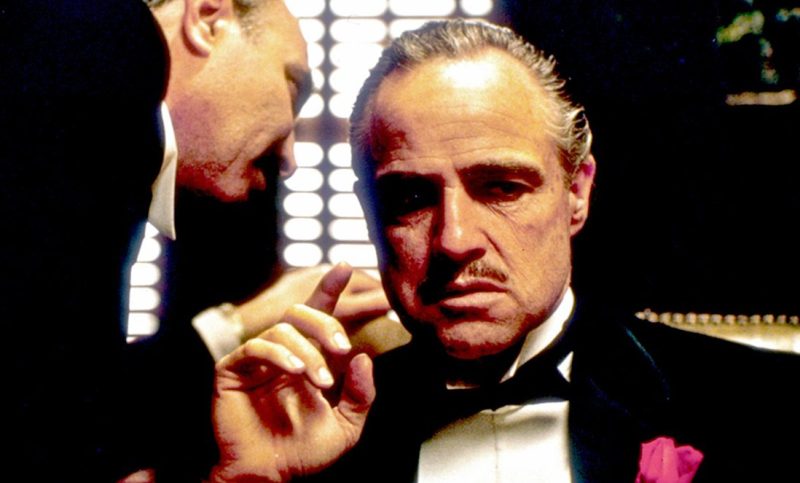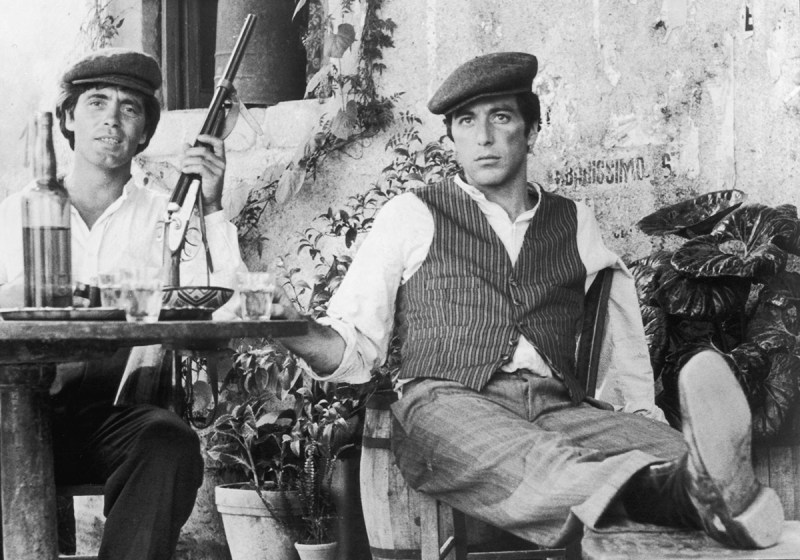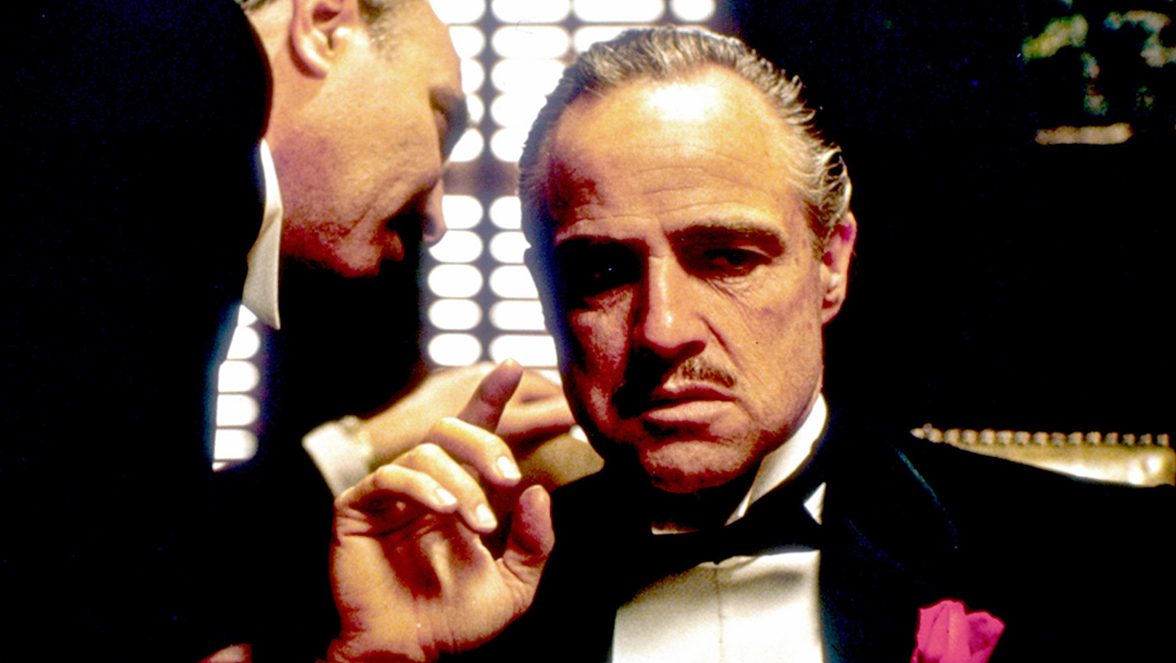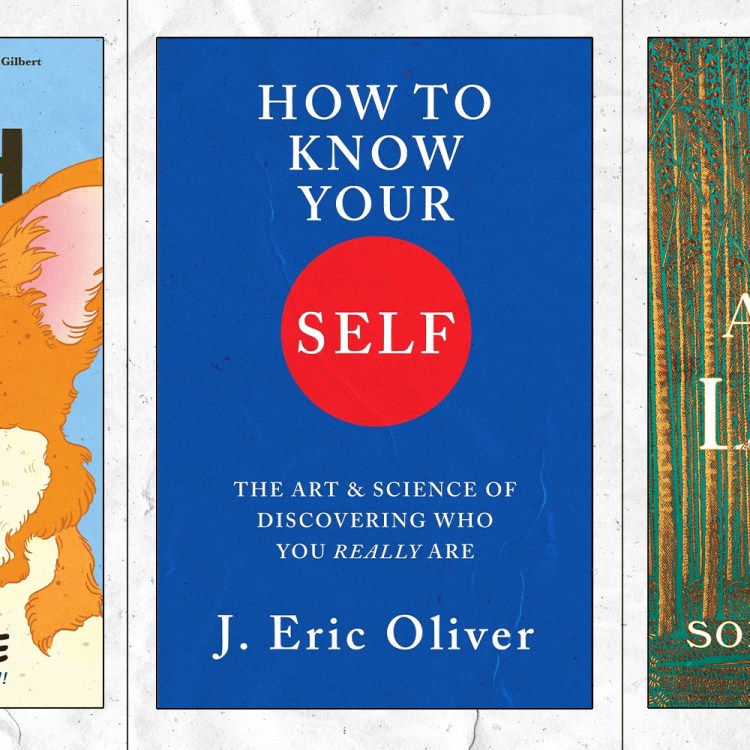
”Somebody had to be helping him. He had the whole atmosphere, the way we talked. That wedding scene — I mean, that was so real. I mean, my book isn’t a pimple on his book, and I’m in my book.”
—Salvatore “Sammy the Bull” Gravano on Mario Puzo’s The Godfather, 2000.
Forty-five years ago this week, The Godfather first opened in theaters and the film has continued to make moviegoers an offer they can’t refuse.
The American Film Institute rates the 1972 Best Picture Oscar winner as the second-greatest film of all-time, behind only Citizen Kane, and the crime drama has been hailed by generations of critics. But more importantly, it’s gotten the seal of approval from real-life gangsters, many of whom have looked to the film adaptation of the Mario Puzo novel’s depiction of the mob as a badge of honor.
In 2008, for example, Mafia enforcers left the severed head of a donkey as a warning to a baker who refused to pay protection money in Villafranca Padovana, Italy. The gang was apparently inspired by the infamous scene in The Godfather when a producer wakes up to find the head of his beloved thoroughbred horse in his bed.
Notorious drug dealer Griselda Blanco, on whom Catherine Zeta-Jones’ character in Traffic was based, was such a fan of director Francis Ford Coppola’s epic that she christened her youngest son, Michael Corleone (after Al Pacino’s character), according to a 2001 Daily Mirror article.
And the fact is: gangsters love The Godfather. Well, not at first—indeed, they actually attempted to prevent the movie from being made, with Joseph Colombo Sr. particularly hating the book. But they quickly came around for a few reasons. For one, it was the rare gangster film for the time that wasn’t shown from the perspective of the police. (Sterling Hayden’s corrupt Capt. McCluskey is less law-abiding than most of the actual criminals.) For another, it presented Don Corleone as surprisingly honorable: ruthless with his enemies, but devoted to his family. Finally, it made the effort to feel authentically Italian-American. As Paramount head Robert Evans put it, you can “smell the spaghetti.”

Today, The Godfather is celebrated in the underworld to the point they actually study it. Diego Gambetta’s 2009 book Codes of the Underworld: How Criminals Communicate found “lowlife imitating art,” as the film literally served as a training tool. (Not to mention a recruitment tool—anyone who hasn’t watched The Godfather and at least briefly fantasized about living the life of a Corleone is a liar.)
Even the fictional characters from The Sopranos love The Godfather. They discuss a “Moe Greene special.” They sit down for a special screening of The Godfather II and share their favorite scenes. Silvio busts out impressions of both Michael and Kay. One of the funniest moment in the entire series occurs when Paulie Walnuts reveals his car horn plays a tune that is very familiar to movie fans.
Of course, gangsters studying The Godfather is absurd on many levels. Virtually no one playing a major role in creating the film had a significant connection to the Mafia. Puzo insisted he had “never met a real honest-to-God gangster.” (He did, however, research gangsters relentlessly.) Coppola was the son of a flautist. Marlon Brando—Don Corleone himself—wasn’t even Italian.
All this aside … when you watch it, you can smell the spaghetti, which is what ultimately matters.
By setting out to capture the life of a gangster authentically, The Godfather now shapes today’s criminals. As Sammy the Bull put it as he reflected on the legendary restaurant scene:
”Remember how Michael couldn’t hear anything as he’s walking up on them? Remember how his eyes went glassy, and there was just the noise of the train in the background, and how he couldn’t hear them talk? That’s just like I felt when I killed Joe Colucci. Somebody who wrote that scene had to have a feeling for that. I mean, I felt like I was pulling the trigger myself.”
—Sean Cunningham and Ethan Sacks for RealClearLife
This article appeared in an InsideHook newsletter. Sign up for free to get more on travel, wellness, style, drinking, and culture.

























